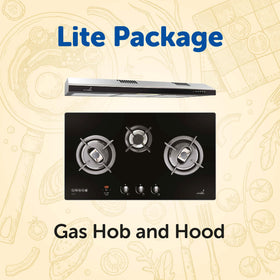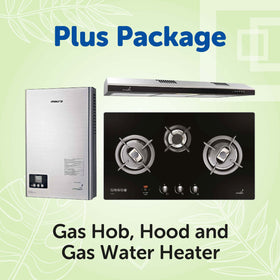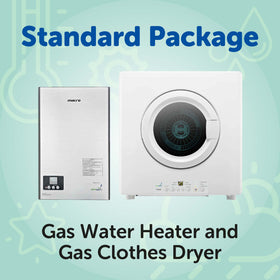You Asked, BCA Answered! Insights from BCA, Brought Exclusively by City Energy
The following clarifications were provided directly by BCA in response to common developer queries:
Looking ahead: Gas beyond 2030
Singapore’s town gas contains approximately up to 50% hydrogen by volume, making it a lower-emission energy source.
City Energy aims to reduce emissions further by increasing the proportion of hydrogen in its supply and is exploring a cross-border hydrogen pipeline in partnership with Gentari (a wholly-owned subsidiary of Petronas).
Because Singapore’s existing town gas pipeline network is compatible with hydrogen-enriched blends, this transition can happen gradually—without major infrastructure overhauls. For developers and consultants, this means town gas is already aligned with Singapore’s long-term energy roadmap—helping reduce the risk of costly retrofits as cleaner fuels are phased in.
Get Ahead of Green Mark: Water Heater Efficiency Now Counts

In Singapore, electric storage heaters are a common choice for water heating in residential developments, and for a good reason: they’re familiar, relatively simple to install, and low-cost, capable of serving multiple bathrooms with a single unit in HDBs and condominiums.
However, that familiarity often comes at the cost of energy efficiency.

Green Mark compliance now affects water heater selection
Green Mark certification—Singapore’s national green building rating system administered by the Building and Construction Authority (BCA)—is no longer just an aspirational differentiator. Projects that fall short risk missing out on gross floor area (GFA) bonuses and access to green financing.
Failing to comply may incur added retrofit costs over time as standards tighten. With Singapore targeting 80% of buildings to be green by 2030, higher-tier certification is becoming the baseline.
With recent changes, water heaters are now explicitly included in the dwelling unit appliance efficiency assessment under "Energy Efficient Dwelling Unit Equipment Selection (Residential Buildings)" of the Green Mark 2021 Residential Buildings Technical Guide.
You Asked, BCA Answered! Insights from BCA, Brought Exclusively by City Energy
The following clarifications were provided directly by BCA in response to common developer queries:
Water heaters are now regulated under NEA MELS
The Minimum Energy Labelling Scheme (MELS) was extended in April 2025 to include water heaters. Under MELS, water heaters are rated 1 to 5-Tick based on their Uniform Energy Factor (UEF). City Energy’s gas instant water heaters are rated 4-Tick under MELS—the highest tick currently available for water heaters.
Specifying at least 3-Tick models—or the highest ticks available—meets the assessment criteria requirement for most developments. However, for Government Land Sales (GLS) sites sold after June 2022, Green Mark Platinum (SLE) is mandatory. These projects must demonstrate a minimum 60% improvement in energy performance over the 2005 baseline and attain the Maintainability Badge under the Green Mark 2021 framework. Thus, selecting 5-Tick appliances or the highest tick available becomes an essential early compliance lever to help close the performance gap.

Water heater efficiency affects Green Mark scoring
Water heaters account for roughly 11% of household electricity use in Singapore—making them the third-largest energy load after air-conditioners and refrigerators. Under the assessment criteria for “Energy Efficient Dwelling Unit Equipment Selection (Residential Buildings)”, they’re now included in the assessment of dwelling unit appliance efficiency.
While Green Mark does not award points to individual appliances, the Energy Efficient Dwelling Unit Equipment Selection requirement (under Pathway 2) specifies that installed appliances must be rated at least 3-Tick or the highest tick currently available under NEA’s Mandatory Energy Labelling Scheme (MELS).
For residential water heaters, NEA’s MELS allows for up to a 5-Tick rating. A 4-Tick model is sufficient to meet the GoldPLUS and Platinum equipment selection criteria. Although the scheme allows for 5-Tick ratings, the highest rating currently achieved by models on the market is 4-Tick. As such, a 4-Tick model would also meet the SLE equipment selection criteria, as it represents the highest tick currently available.
In short, high-efficiency water heaters offer one of the simplest ways to improve EE scoring without requiring changes to building layout or systems.

Same output, better performance, minimal disruption
Gas instant and electric storage heaters are systems commonly used in Singapore to supply hot water. Some 4-Tick electric water heaters are listed under MELS, but these are typically instant or small-capacity storage units—suitable for single hot water point delivery only.
Due to their tank-based design, electric storage heaters have a higher baseline energy consumption. Gas heaters, by contrast, heat water only on demand, delivering the same user experience with significantly lower energy use. City Energy’s gas water heaters meet the MELS 4-Tick requirement and offer the highest operating efficiency available.
This also reduces electrical load on the grid and contributes to measurable emissions savings—up to 17,400 kg of CO₂ per household over 15 years, according to a study done by Prof. Lee Siew from the National University of Singapore. At scale, that translates to 7.8 million tonnes of avoided emissions, or the equivalent of removing 1.7 million cars from Singapore roads.
These systems also fit easily into typical M&E and plumbing layouts, minimising design adjustments. Some models include smart-enabled features such as app-based temperature control, usage tracking, fault alerts, and pre-heating—adding functional value for end users and project teams.
From a user perspective, gas instant heaters operate similarly to electric storage units, supporting multi-point delivery with consistent hot water output.
Safety features and future-proofing built-in
Gas water heaters offer a rare win-win: homeowners enjoy a comfortable, low-maintenance living experience, while developers gain a compliant, future-ready solution that’s easy to integrate.
Designed to work quietly in the background, these systems provide instant, consistent hot water to multiple bathrooms while saving energy and space compared to the alternatives. They embody the qualities of a modern appliance: efficient, unobtrusive, and built for real-world use.
Each unit is tested to meet rigorous EN26 standards and includes built-in safety mechanisms such as flame failure detection and pressure sensors, offering families dependable protection and peace of mind.
Newer models also feature smart-enabled functions like usage tracking, app-based temperature control, and even pre-heating—offering comfort and conservation by reducing water wastage and wait time.
Gas heaters are well-suited to Singapore’s evolving energy landscape. City Energy is advancing its gas supply infrastructure to accommodate higher hydrogen content, which will help reduce future retrofit risks and ensure long-term system continuity. (See sidebar: Gas beyond 2030)
The benefit is clear: fewer callbacks, more substantial buyer confidence, and a robust, widely adopted solution that aligns with sustainability goals—with minimal design trade-offs.

Conclusion: better compliance, no added complexity
Although still commonly used, electric storage heaters often fall short due to the inherent inefficiencies of tank-based systems. Electric instant water heaters, while effective for single bathrooms, are typically unsuitable for private residential developments due to limited flow capacity and single-point delivery.
Gas instant water heaters offer a superior solution. Proven in more than 100,000 private homes, they support reliable multi-point delivery, meet MELS 4-Tick standards, and require no major changes to plumbing or M&E layouts. They also ease electrical demand, contribute up to 17,400 kg of CO₂ savings per household over 15 years, and improve EE scoring under Green Mark as part of overall system efficiency.
Smart-enabled models further enhance homeowner appeal, offering features like app-based control, usage tracking, and pre-heating—combining comfort and conservation by reducing water wastage and wait time.
In short, gas water heaters support long-term sustainability targets under the assessment criteria for “Energy Efficient Dwelling Unit Equipment Selection (Residential Buildings)” and the Green Mark 2021 framework—without adding design complexity or delivery risk. As certification standards rise, getting the specification right matters more than ever.






